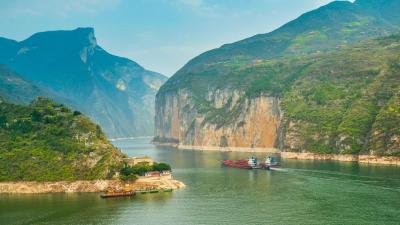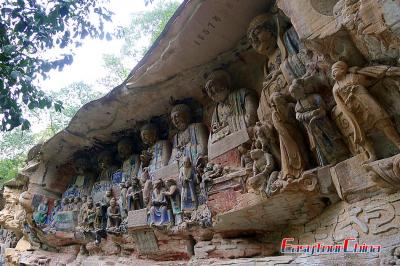China Three Gorges Museum
Situated at the west part of the People's Square of Chongqing, opposite the Chongqing People's Hall, China Three Gorges Museum occupies an area of 30,000 square meters. The museum was completed and opened to the public on Jun 18, 2005 as the largest monographic museum in China. Moreover, it was the first large museum with the title of China named by the State Council Office of the People's Republic of China beyond Beijing.
The Chongqing China Three Gorges Museum traces its origins to the Southwest Museum of China, established in March 1951. It was renamed the Chongqing Museum in June 1955, with the new museum building officially opening to the public on June 18, 2005. The museum complex comprises five venues: the Main Museum Building, the Chongqing Baiheliang Underwater Museum, the Chongqing Soong Ching Ling Memorial Hall, the Tushan Kiln Site, and the Chongqing Three Gorges Cultural Relics Science and Technology Conservation Center. Together with the nearby Chongqing People's Square and the Chongqing People's Grand Hall, they form Chongqing's iconic landmarks.
With another name - Chongqing Museum, Three Gorges Museum is not only a specified museum of Three Gorges but also a comprehensive museum of China's history and art, owning a collection of over 170,000 pieces (sets) of cultural relics, including ancient human specimens, Three Gorges cultural relics, Ba-Yu bronze wares, Han Dynasty artifacts, cultural relics of ethnic groups in Southwest China, cultural relics from the Anti-Japanese War in the rear area, porcelain, calligraphy and paintings, and ancient zithers. Additionally, there is one 360-degree panoramic film, one diorama display, one visitor activity center, and three temporary exhibitions.
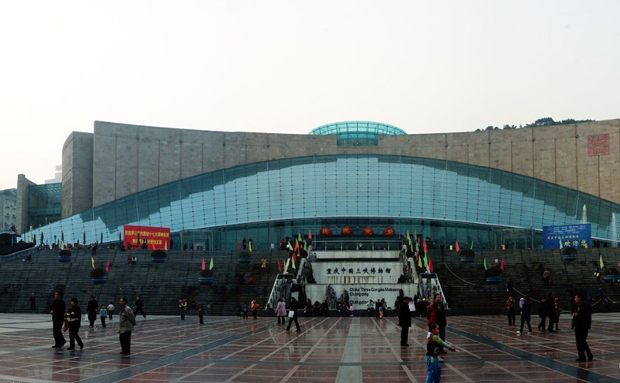
Chongqing Three Gorges Museum Facts
Most Important Treasures of Three Gorges Museum
Numerous cultural and art treasures in Three Gorges Museum make it one of the best Yangtze River attractions and must-see on Chongqing tours.
Breastfeeding Figurine: A Han Dynasty artifact. Height: 20 cm. Red-painted clay composite mold. Head wrapped in a headscarf, wearing a loose robe, holding an infant to breast, with the sash undone for nursing.
Left Mandible Fossil of “Wushan Man”: Discovered at Longgupo in Wushan—an early Paleolithic hominin site—this fossil provides evidence that the emergence of Homo in East Asia occurred not hundreds of thousands of years ago, but 2 million years ago.
Three-Goat Vase: Unearthed in 1980 at Lijiatang, along the Daning River in Dachang Town, Wushan County, Chongqing. Total height: 42.8 cm. Originally housed in the Wushan County Cultural Relics Management Office, transferred to the China Three Gorges Museum in Chongqing in June 2005.
Bird-shaped Vessel: Originally a wine vessel, unearthed in 2002 at the Xiaotianxi Cemetery in Fuling. Overall dimensions: 28 cm long, 16.8 cm wide, 29 cm high. The entire piece is shaped like a bird, featuring a fish-like mouth, an eagle-like beak nose, animal ears, a phoenix crown, a pigeon-like body, and duck feet. The surface is densely decorated with feather patterns, with turquoise inlaid in a regular pattern over the feather designs.
Banquet, Music, Dance, and Carriage Procession Pictorial Stones: Eastern Han Dynasty artifacts. Unearthed in 1954 from Eastern Han tombs at Yangzi Mountain, Chengdu. The collection comprises eight pieces, each varying in length from 98 to 230 cm, with a combined length of approximately 11 meters and a width of 45 cm.
Exhibitions
The exhibition hall of China Three Gorges Museum covers 23,225 square meters, including four basic exhibitions, six special exhibitions, and 20 to 30 temporary exhibitions.
The Splendid Three Gorges
It reflects the cultural and historical spirits of Three Gorges - the Yangtze River canyon with the best natural miracle and the greatest cultural profoundness in the world. Through billions of years of marine and terrestrial sedimentation, coupled with the geological movements of the Jinning Orogeny, Indochina Orogeny, Yanshan Orogeny, and Himalayan Orogeny, the Yangtze River Three Gorges region has been sculpted into a landscape of extraordinary topography and majestic mountains and rivers.
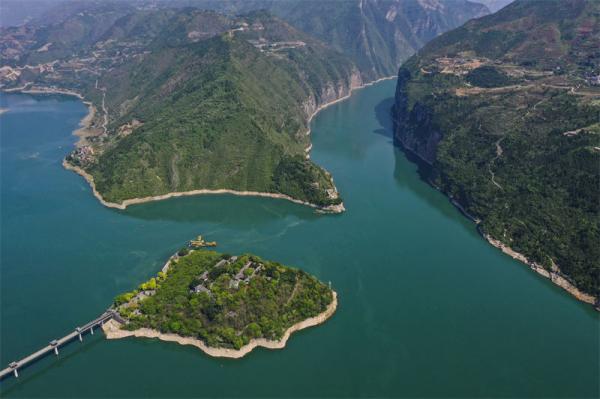
In this exhibition hall, you can also learn about the Three Gorges boatmen and their high-pitched, spirited chants as they navigated the swift currents and treacherous shoals. Large vessels required fifty to sixty boatmen, while smaller ones needed twenty to thirty. They pulled from above and pushed from below, propelling the ships upstream. When encountering shoals, boatmen from three or four vessels—over a hundred in total—would join forces to pull a single boat. Imagine the boatmen: bare-backed, bronze-skinned, with deep red marks etched into their shoulders from the ropes. Their powerful hands gripped the towlines—braided from bamboo strips and hemp, typically a hundred zhang long. Before use, these ropes were boiled in lime water to enhance their toughness. The rapids and shoals of the gorge made the boatmen's lives exceptionally arduous! Today, with the completion of the Three Gorges Dam, the era of boatmen pulling boats has passed. Yet, on the cliff walls along both banks of the Three Gorges, the boatmen stones—marked by the deep grooves and gouges carved by ropes and sweat over centuries—still bear witness to the tenacious will of the Three Gorges people and the hardships of Yangtze River transportation.
At the Three Gorges Museum, learn about authentic local dwellings—predominantly post-and-beam or stilt-house structures, often nestled against green mountains and facing flowing waters. Back baskets, carrying sacks, and wooden poles were the primary means of manual transport.
During the Three Kingdoms period, the Three Gorges region belonged to the Shu Kingdom, leaving behind numerous Shu Han relics and tales of famous figures, discovered at the China Three Gorges Museum.
Sculptures of the Han Dynasty (206BC-220)
Han Dynasty sculpture from the Bashu region stands as a dazzling jewel in China's artistic treasury. To celebrate International Museum Day on May 18, the Chongqing Three Gorges Museum launched its “Han Dynasty Sculpture Art of Bashu” special exhibition on May 15, 2021, as an upgraded version of its original “Han Dynasty Sculpture Art” display. Spanning approximately 720 square meters, the exhibition showcases nearly 160 pieces (sets) of Han Dynasty sculptural artifacts from the Ba-Shu region, including stone gate towers, carved stone panels, carved stone coffins, carved bricks, ceramic figurines, and model funerary objects. Among these, 47 pieces (sets) are designated as Class I cultural relics.
The History of Chongqing
It describes the changes of Chongqing City in the 20th century. Following its official opening as a treaty port in 1891, Chongqing became the starting point of the Yangtze River's east-west trade artery and a distribution hub for goods from the upper Yangtze region. The 1920s marked a pivotal decade in Chongqing's urban development, with municipal institutions evolving through several key stages: the Treaty Port Office, Municipal Public Office, Treaty Port Supervisory Office, Municipal Council, and Municipal Government. In February 1929, Chongqing was formally established as a municipality.
On November 20, 1937, the Nationalist Government issued a declaration announcing its relocation to Chongqing. On May 5, 1939, Chongqing was redesignated as a directly administered municipality under the Executive Yuan. On September 6, 1940, Chongqing was further designated as the secondary capital. During the War of Resistance, Chongqing not only gained elevated political status but also experienced unprecedented urban expansion. This growth stemmed from the relocation of over 400 factories and more than one million people from coastal and riverside regions to Chongqing and its adjacent river areas.
These historical chapters are vividly captured in photographs and relics—such as the late Qing-era Chongqing city sand table, Ming and Qing dynasty prefectural city structures, hotpot restaurants, cotton shops, blacksmith workshops, traditional Chinese medicine pharmacies, and water/electricity supply systems.
Porcelains of Various Dynasties
Due to exhibition space limitations, only over 250 carefully selected porcelain pieces are on display. However, spanning from the Xia and Shang dynasties to the Republic of China era, the collection features a comprehensive range of kilns and diverse varieties, covering nearly the entire history of Chinese ceramics.
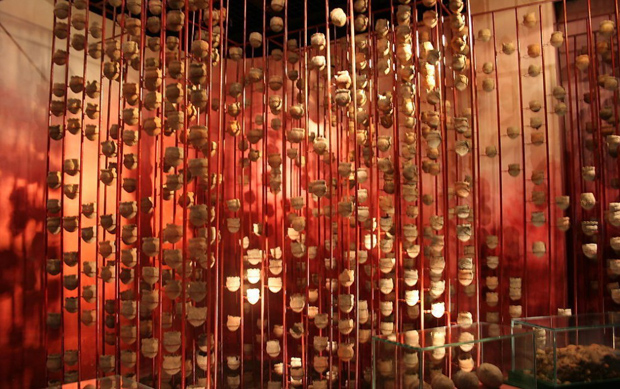
Coins of various dynasties
Folk Customs of the People of Southwest China
Southwest China encompasses six provinces, autonomous regions, and municipalities: Chongqing, Sichuan, Yunnan, Guizhou, Guangxi, and Tibet. Across this beautiful land, over 30 ethnic groups—such as the Achang, Bai, Blang, Lisu, Tibetan and Lhoba—coexist harmoniously. The historical and natural diversity and differences of the Greater Southwest have shaped the distinctiveness and uniqueness of its ethnic cultures and traditions. Since the early 1950s, the Chongqing Museum has been collecting and researching the daily necessities, artifacts, and artworks of China’s ethnic minorities in the southwestern region.
The Anti-Japanese War (1937-1945)
The other exhibitions in China Three Gorges Museum include Far-Ancient Ba Yu which introduces the origin and development of Chongqing history, Paintings and calligraphies through the ages, and Cultural relics donated by Li Chuli.
How to Get to Three Gorges Museum in Chongqing
By Rail: Take Light Rail Line 2 and get off at Zengjiayan Station, or take Light Rail Line 3 and get off at Niutaotuo Station.
By Bus: Take bus routes 132, 145, 181, 261, 262, 265, 421, 829, 862 (Inner Ring), 866, 881, 152, 215, 104, 112, 338, 609, 322. Get off at Grand Hall Station or Xuetianwan Station.

